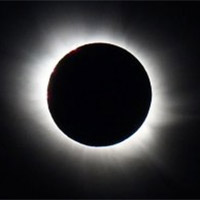Shooting the Solar Eclipse in August
posted Friday, July 7, 2017 at 2:34 PM EDT

On August 21, 2017, the full moon will orbit the Earth at just the right angle so that during the day, it will completely obscure the sun -- a solar eclipse. A solar eclipse isn't actually that rare -- it happens between two to five times per year, but because of how the moon orbits the Earth, it's not often that the eclipse is obviously viewable. The last time the United States was treated to such a good view was in 1970!
But first, our lawyers have instructed us to put a safety warning, so hear goes:
Looking directly at the sun, even when it is partially covered by the moon, can cause serious eye damage or blindness. NEVER look at a partial solar eclipse without proper eye protection.
Here is a helpful web page with advice on how to safely view the eclipse.
Now that we've got that out of the way, let's talk about how to take photographs of this once-in-a-lifetime event!
Where is the best place to view the Solar Eclipse?
The solar eclipse will be viewable, to some degree, all across North America. The absolute best place to see it will be along a path leading from Lincoln City, Oregon southeast towards Charleston, South Carolina (NASA has set up a comprehensive website including the exact path of the solar eclipse). At points along this path, you'll be able to see the moon completely obscure the sun in a moment called "totality." If you're north or south of this path, you'll still see the moon obscure the sun to some extent: the further away you are from the path, the less the sun will be obscured.
When will the Solar Eclipse begin? How long will it last?
The eclipse begins on the west coast at just after nine o'clock in the morning, Pacific Daylight Time; at this stage, the moon will start to eclipse the sun. Of course, as the moon transits towards the east, viewers will have to wait for the moon to catch up and the Earth to keep rotating: you won't see the eclipse begin on the east coast until just after 1 o'clock in the afternoon, Eastern Daylight Time. It takes several hours for the moon to transit the sun, but the critical moment -- totality, when the moon completely covers the sun -- will only last two minutes and forty seconds. And if you're not in the exact path where you will experience complete totality, this period of totality will be shorter -- viewers on the very edge of the path may observe totality for only a few seconds.
NASA has an excellent interactive map which will show you what you can expect to see during the day of the eclipse, depending on your location.
What do I need to take good photographs of the Solar Eclipse?
Rather than write up a whole article on the equipment you could use and the settings you might consider, we thought we would just link two excellent videos prepared by Nikon, which go into detail on what you can expect on the day:
So stock up on your pinhole cameras and solar shades, and get out there and enjoy the Solar Eclipse on August 21. You might not see another one for another forty years!